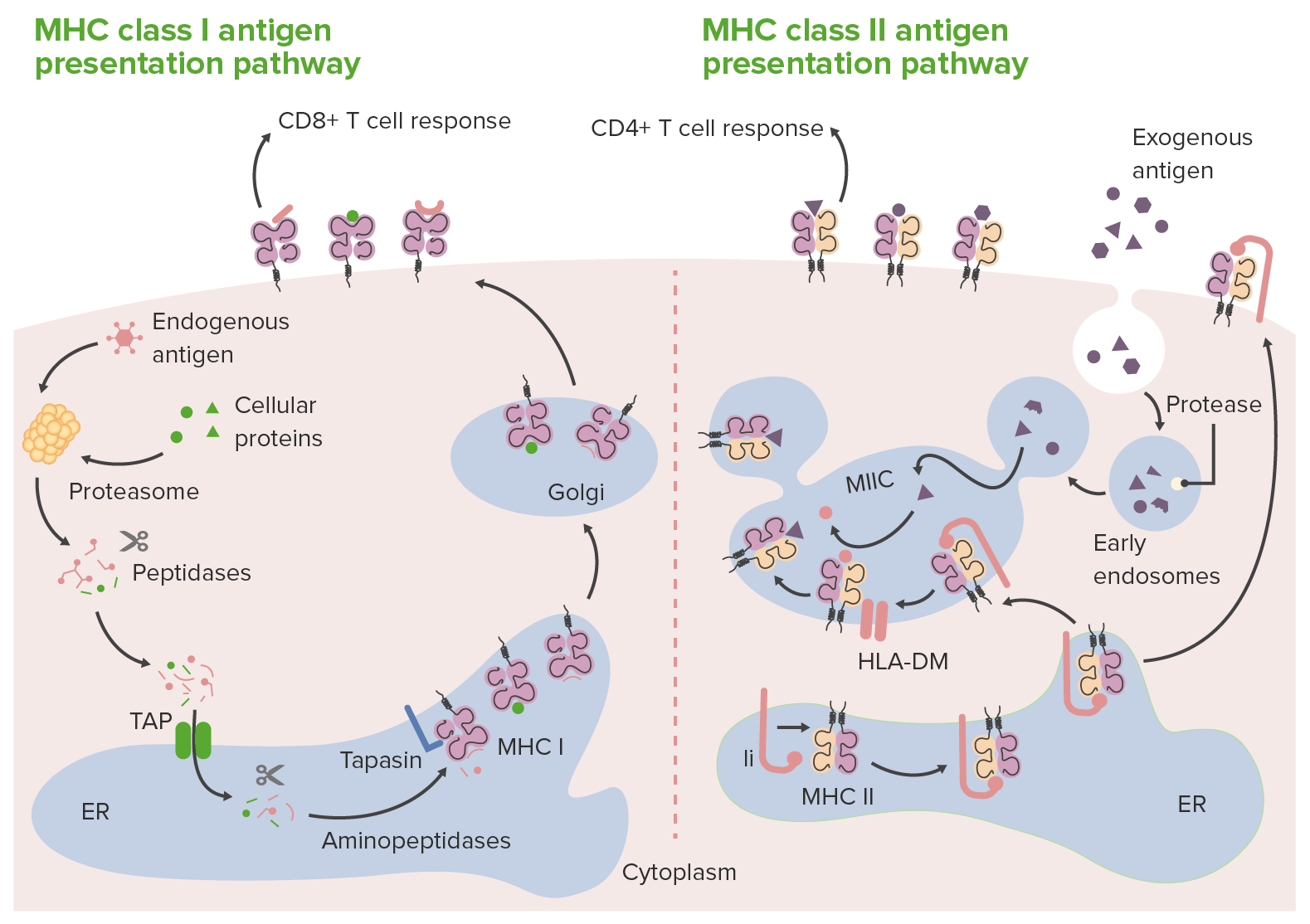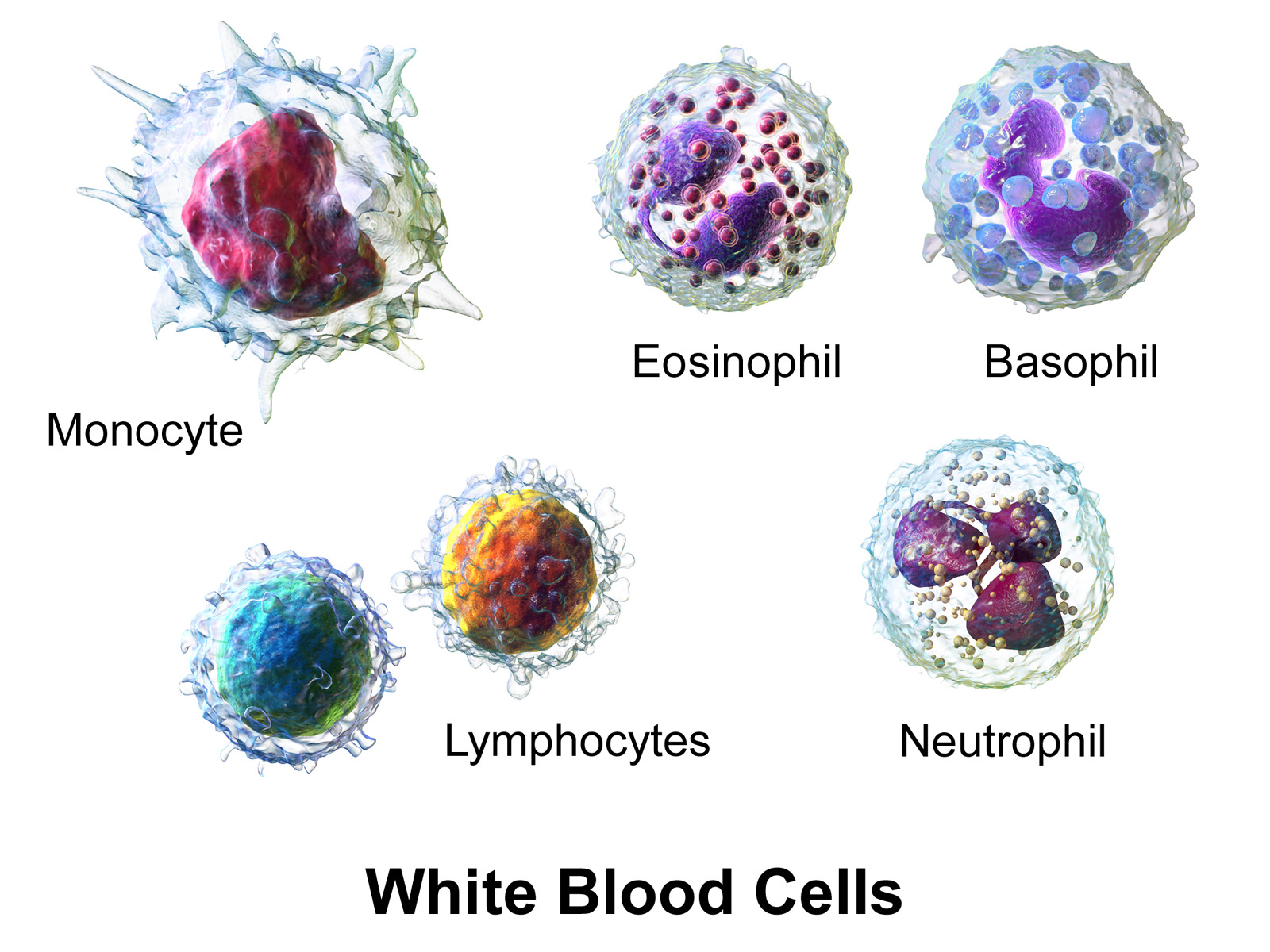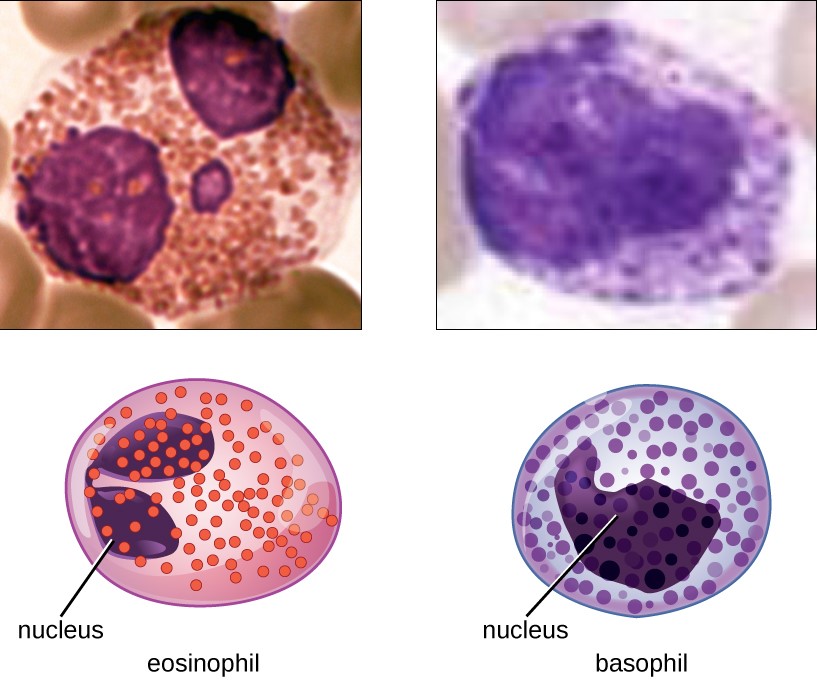Playlist
Show Playlist
Hide Playlist
Introduction: Pathogens and the Immune System
-
01 Slides Overview Immune System.pdf
-
Download Lecture Overview
00:01 I’m going to present you with an overview of the immune system. 00:04 We’re all familiar with the fact that our immune system protects us from infections. 00:08 We all get colds, and flu and stomach upsets now and again where the immune system helps fight those nasty pathogens that are causing harm to us. 00:19 So there are many different types of pathogens that we come across all the time - bacteria, viruses, fungi and parasites. 00:31 See immune system actually has quite a tough job to do because it has to recognize all these different types of pathogens. Some of them like viruses, are incredibly small. Others like parasites can actually be quite big. Imagine a big tapeworm in your gut. 00:49 So it’s not surprising that you will learn that the immune system doesn’t employ just one strategy, but has multiple strategies to deal with different types of pathogens depending on where they are in the body, whether they’re inside a cell, whether they’re outside of a cell, whether they’re very small, very big and so forth. 01:13 Before the immune system actually comes into play, we have many different defenses that are not strictly speaking part of the immune system. 01:23 We call these the first lines of defense. 01:27 So for example, the skin, which forms a physical barrier. 01:32 If you think about it, if you have damage to the skin, two major problems you have there. 01:38 One is fluid loss, but the second is infection. 01:43 And this tells us very clearly that the skin is really an important part of protecting us from infection. 01:52 We also have mucus which can prevent colonization by microorganisms in places such as the lung. 02:02 Let’s not forget that not all microorganisms are harmful. 02:07 We have commensal microorganisms that occupy a niche in the body that could otherwise be taken up by pathogens. 02:16 And these commensal microorganisms will utilize nutrients and so forth that would otherwise be available to pathogens. 02:24 So, let’s remember not all microorganisms are bad. 02:28 Some of them are very beneficial to us. 02:30 The acid pH in the stomach can help resist pathogens. 02:37 And then we have enzymes that can attack pathogens. 02:40 So all of these things collectively, are very important in providing defense against infection; Even though they are not strictly speaking actually part of the immune response. 02:53 So what exactly is the immune response? Well the immune system is an integrated defense system. 03:00 And it’s composed of tissues and cells and molecules. 03:04 And as you will learn during this lecture, there are actually several different types of cells and molecules that are involved in the immune system. 03:15 And in fact, we can divide the immune response into two different types; what we call the Innate response and the Adaptive response. 03:29 The lymphoid tissues can be divided into two different types: the primary lymphoid tissues and the secondary lymphoid tissues. 03:39 So maybe you’re wondering exactly what the difference is? Well the primary lymphoid tissues are where the cells of the immune system are actually generated. 03:50 And they comprise the bone marrow, where virtually all the cells of the immune response originate from what are called multipotent hematopoietic stem cells. 04:03 And then the other type of primary lymphoid tissue is the thymus. 04:08 This is a very specialized tissue and it’s where one particular type of immune system cell, the T lymphocyte, develops its functionality. 04:18 It becomes functional within the thymus. 04:22 In contrast to the primary lymphoid tissues, the secondary lymphoid tissues are where the adaptive immune responses are actually induced, where they’re generated. 04:33 And these comprise the Mucosa-Associated Lymphoid Tissues which we usually refer to as MALT; The abbreviation MALT for Mucosa-Associated Lymphoid Tissue. 04:46 And perhaps unsurprisingly, this is where pathogens that are present at mucosal surfaces are first encountered. 04:54 Then we have the lymph nodes, which is where pathogens that are present in the body tissues are encountered. Lymph nodes are scattered throughout the body, as you can see here. And they’re actually connected by lymphatic vessels which we’ll talk about in a little bit. And then the third type of secondary lymphoid tissue is the spleen. And cells in the spleen tend to deal predominantly with pathogens that are present in the blood circulation.
About the Lecture
The lecture Introduction: Pathogens and the Immune System by Peter Delves, PhD is from the course Immune System: Overview and Cells.
Included Quiz Questions
Which of the following is a primary lymphoid tissue?
- Thymus
- Spleen
- Lymph node
- Mucosa-associated lymphoid tissue
- Skin
Which of the following is part of the first-line defense system in the human body, but not considered as part of the immune system?
- Commensal organisms
- Natural killer cells
- Plasma cells
- Macrophages
- Neutrophils
Initial exposure to mucosal pathogens for the generation of the adaptive immune response takes place in which of the following?
- Mucosa-associated lymphoid tissue
- Thymus
- Bone marrow
- Blood
- Spleen
Customer reviews
4,9 of 5 stars
| 5 Stars |
|
9 |
| 4 Stars |
|
1 |
| 3 Stars |
|
0 |
| 2 Stars |
|
0 |
| 1 Star |
|
0 |
Thank you for givine such a clear, clean and concise explanation. Looking forward to continue this course. Again, thank you.
Like it?.. no i love it. he is by far of all, quite knowledgeable and his delivery is near perfect.
good way to express ideas, easy to follow, good english, that´s not my native language but i understood everything he said :)
We need a cloned one or twin of Prof Delves for Istanbul Technical University. I began to learn immunology with this lesson and just with 8 days of his video lessons I succeed to pass molecular immunology that's the lesson I hadn't passed for many years. I am grateful for you Dr Delves. The chaotic structure of immunology gets easy by your lessons. Not only your lessons made me be graduated from my undergraduate education but also you changed my mind about immunology. I like it very much after your lessons and the beginning of the journey was this lesson.






